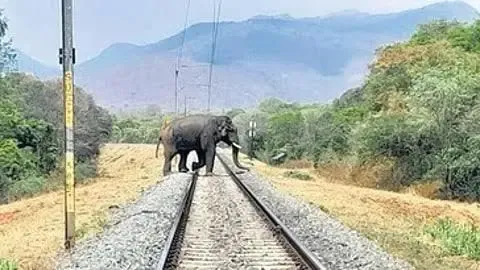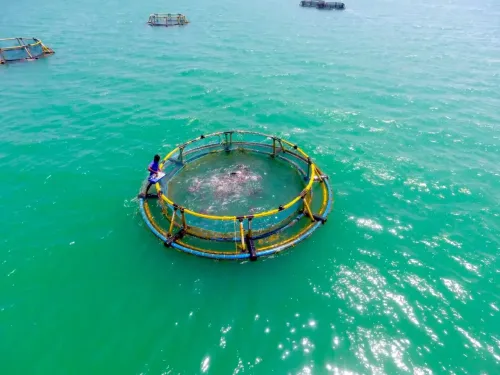How is Southern Railway Enhancing Elephant Safety with New Detection System?

Synopsis
Key Takeaways
- Real-time monitoring of elephant movements.
- Integration of AI technology for accurate detection.
- Alerts sent to railway personnel for immediate response.
- Installation completed on both A Line and B Line.
- Efforts aimed at reducing wildlife risks in train operations.
Chennai, July 21 (NationPress) In a pivotal step towards improving the safety of wild elephants and maintaining secure train operations, the Palakkad Division of Southern Railway is poised to finalize pre-commissioning tasks of the Elephant Intrusion Detection System (EIDS) along the Kottekkad-Madukkarai route by July 30.
This area, situated along the Tamil Nadu-Kerala border, is notorious for frequent wild elephant migrations, creating a risky environment for both wildlife and railway traffic.
To mitigate this issue, the Palakkad Division has introduced the EIDS, a sophisticated system engineered to monitor elephant movements in real-time and prevent potential collisions.
Officials state that the EIDS combines an optical fibre-based sensing network with artificial intelligence-driven analytical modules. This innovative blend of technology facilitates the precise detection of elephant presence and movement, ensuring timely alerts to essential railway staff.
The system has been successfully installed on both the A Line and B Line of the Kottekkad-Madukkarai stretch.
We are currently in the concluding phase of pre-commissioning, which focuses on validating signal accuracy, refining the system, and minimizing false or spurious alarms, explained a railway official.
Our objective is to complete these tasks by the end of July, remarked Divisional Railway Manager (DRM) of Palakkad Division, Arun Kumar Chaturvedi, who recently inspected the project site to assess the implementation progress and ensure operational readiness.
A press release from the Palakkad Railway Division confirmed that post-implementation, verified alerts will be swiftly sent to key stakeholders, including station masters at nearby stations, the Divisional Control Office, level crossing personnel, and locomotive pilots.
These alerts will be communicated through specialized display systems and alert interfaces, facilitating immediate operational responses.
The EIDS initiative is anticipated to significantly lower the risk of elephant-train collisions, a longstanding concern in the forested railway sections of Kerala and Tamil Nadu.
By embracing this proactive and technology-driven strategy, Indian Railways aims to harmonize wildlife conservation with safe railway operations.









